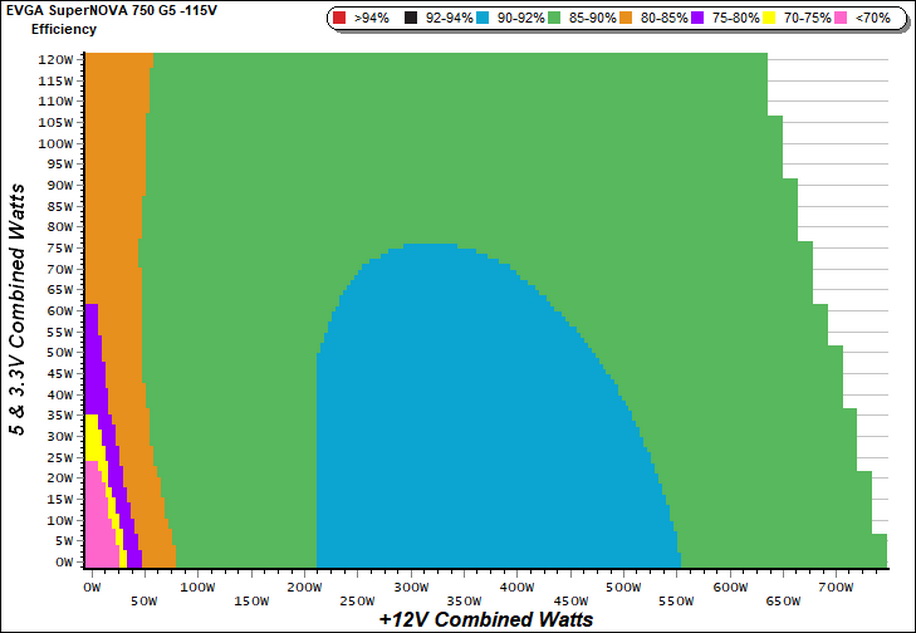EVGA SuperNOVA 750 G5 Power Supply Review
The SuperNOVA 750 G5 is fully modular, compact, and promises for high performance. Will it be able to meet the popular Corsair and Seasonic offerings though?
Why you can trust Tom's Hardware
Protection Features
Check out our PSUs 101 article to learn more about PSU protection features.
| Protection Features | |
| OCP | 12V: 75.2A (120.32%), 12.036V 5V: 27A (112.5%), 4.931V 3.3V: 29A (120.83%), 3.291V 5VSB: 6.2A (206.67%), 4.911V |
| OPP | 1013.95W (135.19%) |
| OTP | ✓ (170°C @ 12V heat sink) |
| SCP | 12V: ✓ 5V: ✓ 3.3V: ✓ 5VSB: ✓ -12V: ✓ |
| PWR_OK | Proper Operation |
| NLO | ✓ |
| SIP | Surge: MOV Inrush: NTC Thermistor & Bypass Relay |
The OCP triggering points at +12V, 5V and 3.3V are reasonable set. The 5VSB rail's OCP is configured high, but there are no issues even at 6.2A. Finally, the over power protection is a bit higher than we would like to see; still, the platform looks to handle this fine.
DC Power Sequencing
According to Intel’s most recent Power Supply Design Guide (revision 1.4), the +12V and 5V outputs must be equal to or greater than the 3.3V rail at all times. Unfortunately, Intel doesn't mention why it is so important to always keep the 3.3V rail's voltage lower than the levels of the other two outputs.
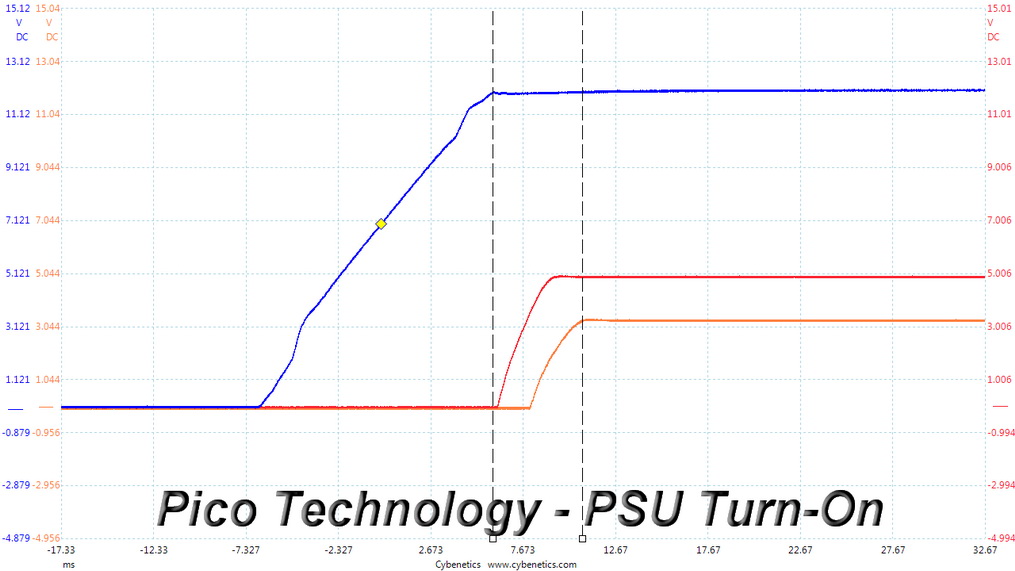
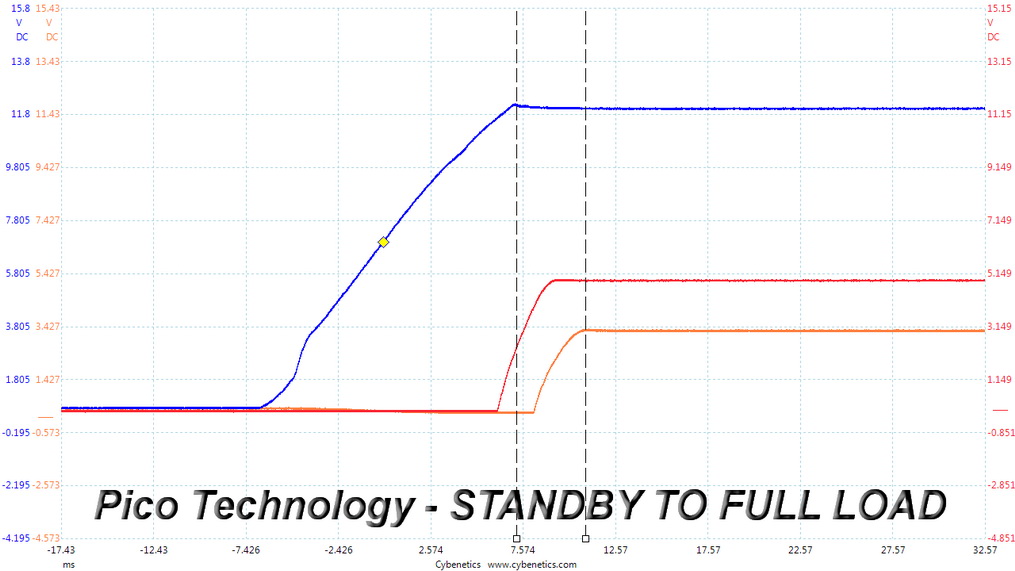
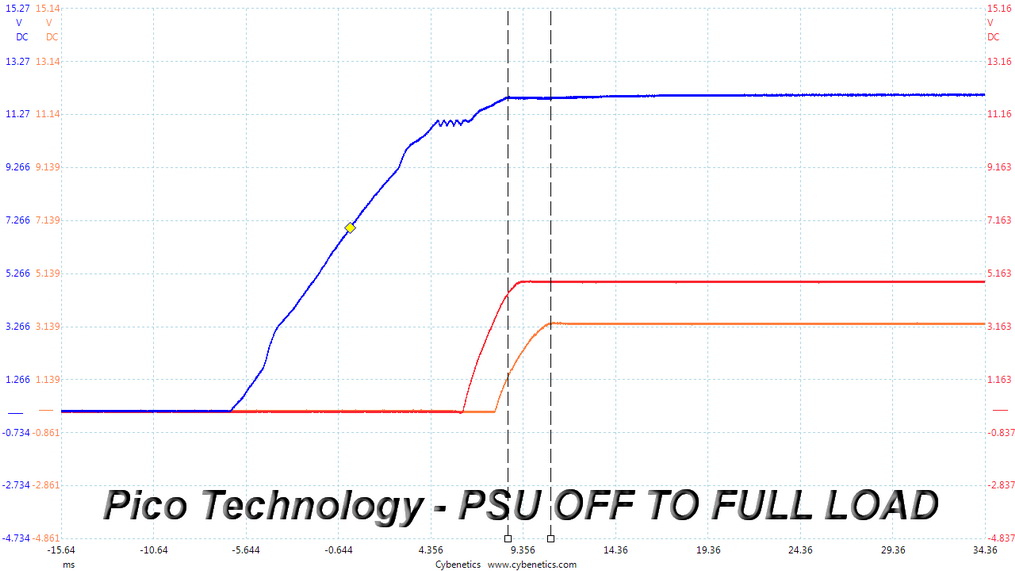
No problems here.
Cross Load Tests
To generate the following charts, we set our loaders to auto mode through custom-made software before trying more than 25,000 possible load combinations with the +12V, 5V, and 3.3V rails. The deviations in each of the charts below are calculated by taking the nominal values of the rails (12V, 5V, and 3.3V) as point zero. The ambient temperature during testing was between 30 to 32 degrees Celsius (86 to 89.6 degrees Fahrenheit).
Load Regulation Charts
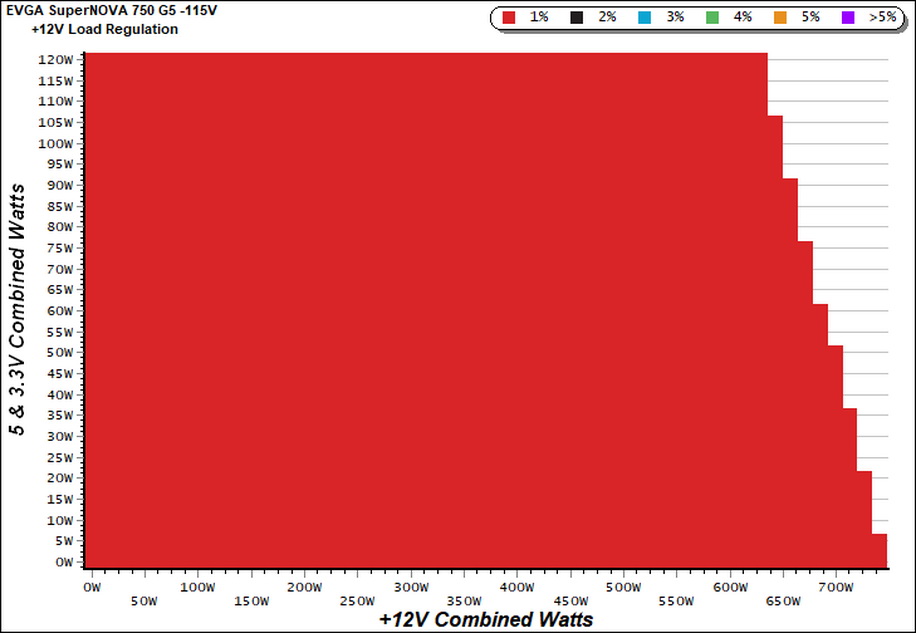

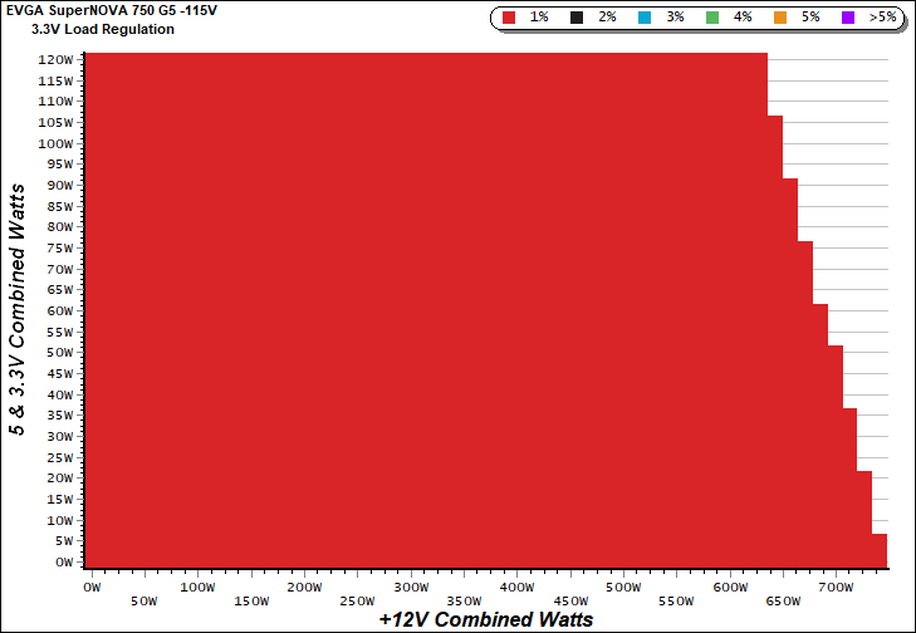
Efficiency Chart
Ripple Charts
The lower the power supply's ripple, the more stable the system will be and less stress will also be applied to its components.



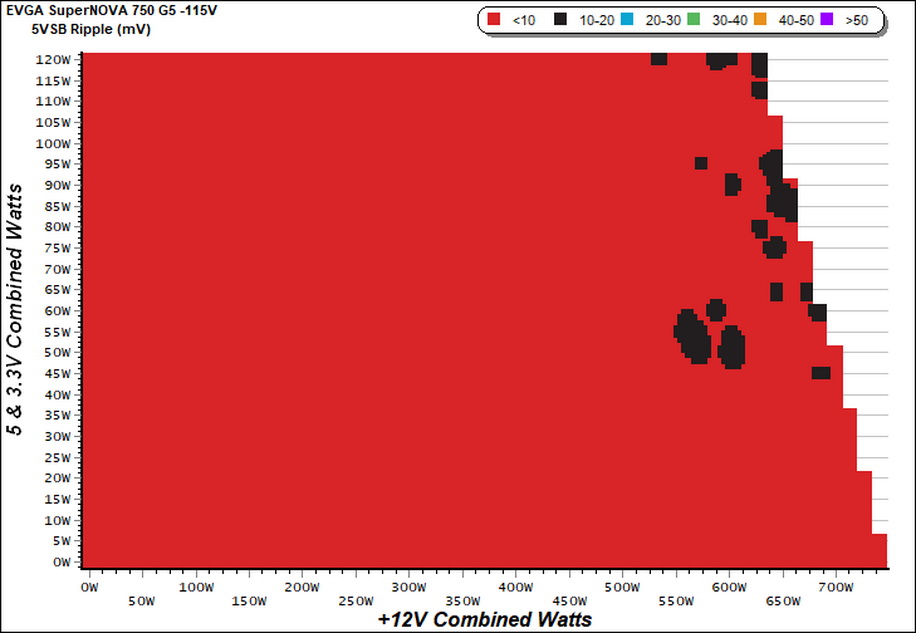
Infrared Images
We apply a half-load for 10 minutes with the PSU's top cover and cooling fan removed before taking photos with a modified FLIR E4 camera able to deliver an IR resolution of 320x240 (76,800 pixels).
Get Tom's Hardware's best news and in-depth reviews, straight to your inbox.

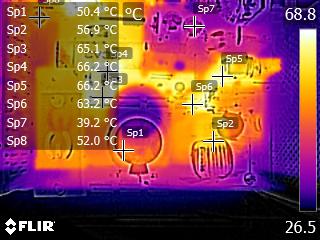
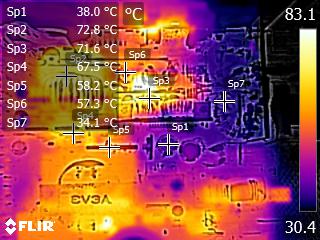
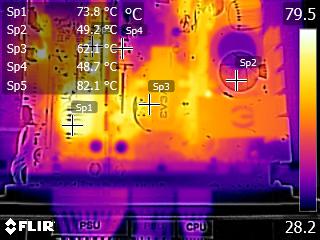
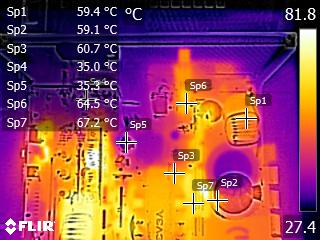
The temperatures at the internals are at normal levels, given the applied conditions, so we see no reason to use such an aggressive fan profile. Most likely FSP's engineers wanted to make sure that the PSU will outlive its extended warranty.
MORE: Best Power Supplies
MORE: How We Test Power Supplies
MORE: All Power Supply Content
Current page: Protection Features, DC Power Sequencing, Cross-Load Tests and Infrared Images
Prev Page Load Regulation, Hold-Up Time, Inrush Current, Efficiency and Noise Next Page Transient Response Tests, Timing Tests, Ripple Measurements and EMC Pre-Compliance Testing
Aris Mpitziopoulos is a contributing editor at Tom's Hardware, covering PSUs.
